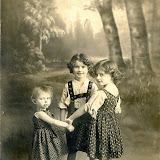Epaminondas sure did a swell job civilizationing everybody with murder and hatred.
Henry Miller, The Colossus of Maroussi
There are two paintings in the National Art Gallery in Sofia commemorating Bulgaria’s liberation from the Ottomans in 1878. Against a grey, gloomy sky, the Bulgarian army retreats from a battlefield, leaving the bloodied and decapitated corpses of Ottoman soldiers scattered in the muddy foreground. These paintings don’t celebrate freedom. They are about the total destruction of the Ottoman forces, a grim revenge for centuries of domination and for the massacre of several thousand Bulgarian Christians at Batak two years before; an episode so savage it compelled the British Government to withhold support for Constantinople when Russia invaded the empire. They are also a presage of what will befall Bulgaria in the next century.
Foundation myths demand that a nation must pass from a dark era of brutal subjection to a new age of freedom and possibility. Think of the celebrations when the Berlin Wall was torn down, or of Ataturk dragging Turkey away from an old and broken regime. If Bulgaria had such a moment it was brief. Whatever the ordinary people wanted, the political leaders locked the country into the tangled knot of Balkan realpolitik. First there was war with Serbia, Russian intervention, an alliance with Serbia and Greece against the Ottomans, another war against Serbia, and Greece, and then World War 1, wherein Bulgaria signed a fateful alliance with the Ottomans. The interwar period followed a similar pattern. Alliances led to redrafted borders, which led to coups, which led to new alliances. In the Second World War Bulgaria kept up the tradition and managed to be at war with everyone. It was part of the Axis until it withdrew in August 1944. Russia invaded, Bulgaria declared war on Germany and meanwhile the Allies bombed Sofia. After all that, the Soviet takeover was a formality.
Four years ago, the railway between the Turkish border and Sofia ran through a long graveyard of abandoned factories; every window smashed, weeds crawling up the broken steel fences, rusting vehicles scattered about. The nuclear power station belonged to the apocalyptic landscape in Tarkovsky’s Stalker. Here, at the edge of the Soviet’s western empire, it looked as though one occupier had fled before the new invaders arrived. Today the EU has erected billboards announcing reconstruction projects but Haskovo, an hour’s bus ride from Plovdiv, still shows what the Bronx would look like if Stalinists took it over.
For centuries Plovdiv was a city pinned between empires. The evidence is all there. A Greek ruin is being excavated on a hill overlooking the Maritsa River. In the city centre a restored Ottoman mosque overlooks a Roman amphitheatre. On the hill behind them lies the ‘old town’, a cluster of brightly painted gingerbread houses, mostly dating from the 1850s to the 1870s, when the city was the centre for anti-Ottoman unrest. Lovers of Communist era architecture (a distinctly asexual perversion) have much to admire in the former administration buildings surrounding the main plaza. Everybody came to Plovdiv, left their mark and departed, usually in a hurry. A year or so back, the city was identified as the centre for counterfeiting in Europe, which is an honour really if you think about the competition it faced from Naples, Bucharest and some other worthy entrants.
The images in this post are real photo postcards bought at various times in Plovdiv. The earliest is dated 1901, the latest from 1930, covering that era when Bulgaria, liberated from the Ottomans, was at the mercy of its neighbours and its own government. This is what sitting ducks look like.
VIEW THE GALLERY HERE
 |
| UNFORGIVING YEARS |


No comments:
Post a Comment
Add comments here